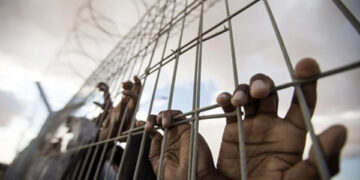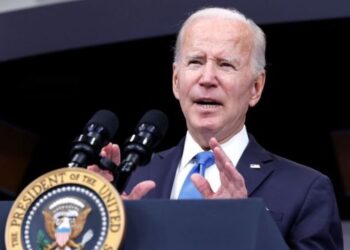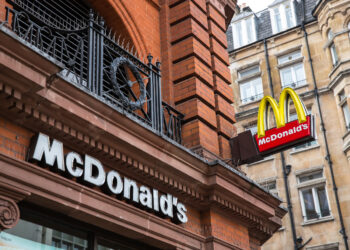Agencies-Gaza post
make your child or grandchild a millionaire
These days it’s hard to reserve for a child or grandchild’s future but you don’t have to save a lot to make an enormous difference.
Free government cash and the power of compounding investment returns can increase what you’ve collected.
to make your money stretch further you can save a pension on behalf of a child.
In the beginning, you can save up to £2,880 each financial year into a child’s pension, and the Government will add a generous 20 per cent on top of what you save.
when you put in £2,880, the child who is born and grew at six per cent a year. After being in the age 57 from 2028 – it would be worth £109,000 in today’s money so, you have stashed away will benefit from your compounding returns.
There are downsides and other options you may wish to consider. It is frustrating for a child harassed with more immediate financial pressures while knowing that they have a bump sum they cannot access.
Helen Morrissey thinks that when the earlier you pension in life would help with more immediate financial kids’ priorities. According to that it will give them a strong start freedom to focus on other parts of their finances.
What Isa can be worth at age 18
A junior Individual Savings Account (Jisa) is also a great way of saving for childrenone great way to save for kids is making a small Individual savings account (Isa). such as adult Isa, any investment returns are tax free.
The key difference is that the annual allowance for a Jisa is £9,000 (for adults it is £20,000). Furthermore, the child can take control of the account only at age 16, accessing the funds at 18.
If you can afford to invest a maximum of £9,000 for 18 years, your child will have £290,000 by the time they reach it – again assuming annual investment returns of 6 per cent. There are also Junior Isas which are very similar to a regular savings account but cannot be accessed until the child is 18 years old.
Sarah Coles is an expert said: ‘Some parents prefer the certainty of cash. But over the long term, an investment Jisa is worth considering. Over five to ten years or more, it stands a better chance of beating inflation than cash.’
investing for a child
Taking a high level of investment risk with a child’s precious nest egg may feel reckless. But it usually pays off. This is because there is plenty of time – in the case of pensions, decades – to ride out the ups and downs of the stock market.
Over long time periods, stock markets usually rise. Most investment platforms offer stocks and shares Jisas and self-invested personal pensions that can be opened on behalf of a child. Providers include AJ Bell, Bestinvest, Fidelity, Hargreaves Lansdown, Interactive Investor and Wealthify.
You can either pick the investments yourself or use one of the tools that the platforms offer to choose between their recommendations.
If you’re not sure what investments to pick, you could start with a broad, low-cost global fund that invests in companies all around the world. That way, you don’t have to decide if you think, for example, that the US stock market will do better than the UK, or if technology stocks are the future.
Investing in the future they want
When investing for a child’s future, growing numbers of parents and grandparents are choosing to invest in the world they wish their child to live in.
He says: ‘Montanaro Better World Fund invests in around 50 small and medium-sized companies that aim to help solve some of the world’s biggest challenges. It ensures that all companies in the portfolio are having a positive impact and it focuses on themes such as healthcare, wellbeing and the green economy.’ The fund has turned a £1,000 investment into £1,236 over three years.
Lipski’s second choice is fund BMO Sustainable Universal MAP Growth. It seeks out companies from around the world that are ESG friendly. With a total annual charge of 0.35 per cent, the fund is at the low-cost end of the market.
It was launched in December 2019, so three-year returns data is not available. However, it is down 10.8 per cent this year, in a difficult period for financial markets.
A savings account is another option
A children’s investments account is an alternative option. Rates on accounts for children tend to be more generous than for adults.
Among the best current purchases is the MySavings account from HSBC, paying 3.25 percent interest. You can open an account for 10 GBP and the funds can be accessed whenever you want. The Saffron Building Society currently pays three percent on one-year bonds, with a minimum balance of GBP 5.
Amy Pethers, said: “Piggy banks and cash savings accounts are useful for teaching young children about money.”
‘But when it comes to longer-term goals, to leave money in cash probably isn’t the wisest decision.’
Premium Bonds can be bought for a child over 16, nevertheless you need to nominate a parent or guardian to look after the money until they turn 16. A child can have up to £50,000 of Premium Bonds in total –same as adults.
Keep hold of the reins
Profits from the trust is taxed as if it belongs to the child. As they are doubtful to work, the child will have the full personal allowance of £12,570 to play with, as well as an annual dividend allowance of £2,000.
And finally…you can give money away
Helping a child by handing over cash as a gift helps children grow and glow
If you make a gift and do not survive for seven years, the gift remains part of your estate for inheritance tax purposes.
Inheritance tax is paid on estates worth more than £325,000 or £650,000 for a couple. There are also a number of allowances that could help you out.
For example, you can give away up to £3,000 a year with no inheritance tax to pay. If you are able to make gifts out of income rather than savings, and without it affecting your lifestyle, you can give away as much as you like.






















